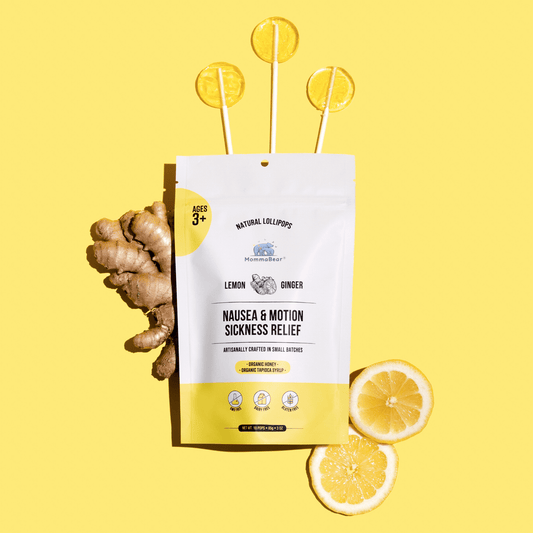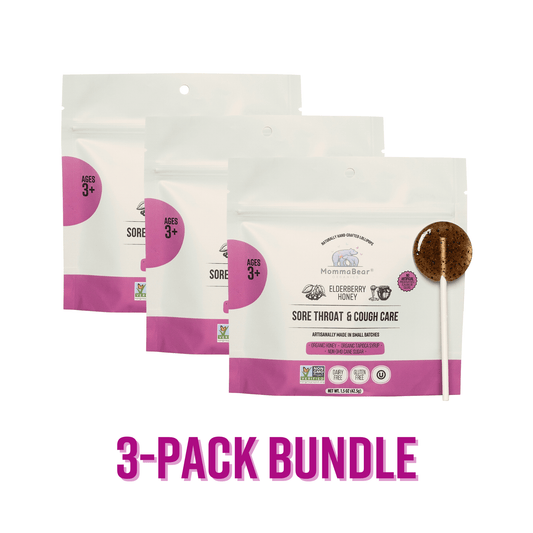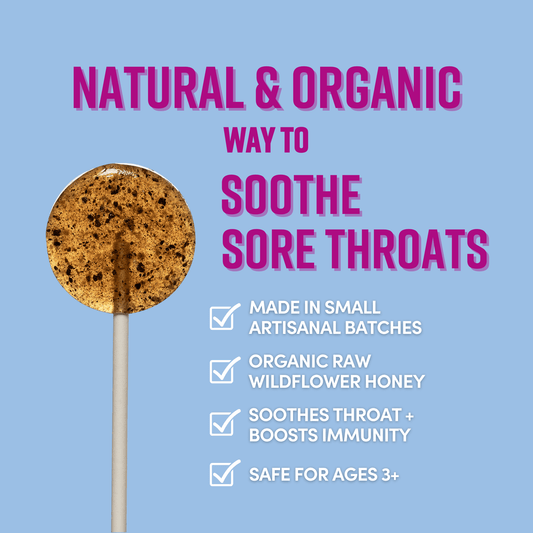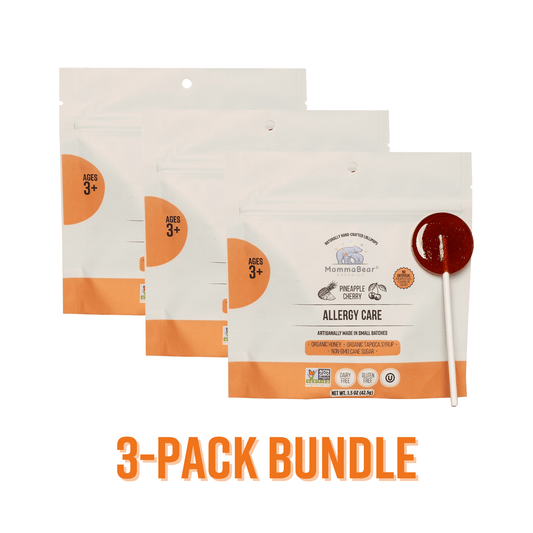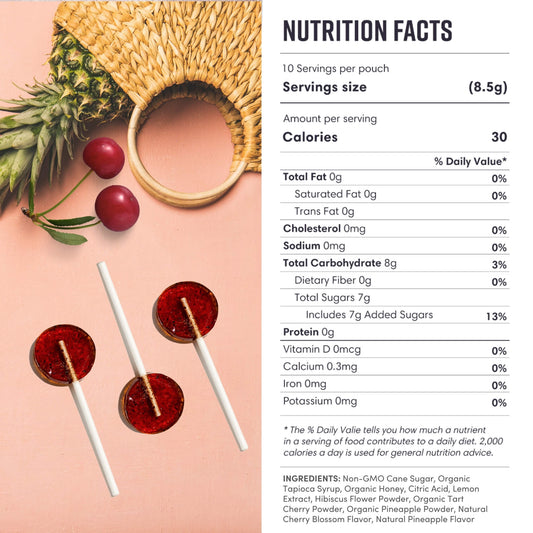Navigating food allergies, especially with candy, can feel so overwhelming. I mean, it seems like every time you turn around there’s a new thing to worry about, and you just want your kids to be able to enjoy a simple treat without a big scare. It’s a lot. But over time, I’ve figured out a few things that really help.
-
Know the Common Allergens: Milk, soy, eggs, wheat, peanuts, tree nuts, fish, shellfish, and sesame are the top allergens to watch for.
-
Read Labels Carefully: Check ingredient lists, "Contains" statements, and advisory warnings like "may contain" or "processed in a facility with."
-
Avoid Hidden Allergens: Cross-contamination during production can introduce allergens even if they're not listed.
-
Choose Trusted Brands: Look for certified allergy-free options like MommaBear Organics, which offers allergen-free, organic treats.
-
Plan for Holidays: Stock safe treats in advance and avoid repackaged candy without clear labels.
Quick Tip: Always double-check labels, even for familiar products, as ingredients and allergen warnings can vary by size or seasonal versions. If in doubt, reach out to the manufacturer for clarification.
Peanut and Tree Nut Free Candy #peanutfree #treenutfree #foodallergy #foodallergies
Common Allergens in Candy
Okay, so the first thing I had to wrap my head around was what we were even looking for. You hear "food allergies," but what does that actually mean when you’re staring at a wall of candy? It’s basically your immune system kind of freaking out over something it thinks is a threat, and with candy, those triggers can be hiding in plain sight. It’s this weird balancing act, trying to keep things fun but also, you know, safe.
I learned somewhere that about 90% of food allergies are tied to just nine things. Nine! It sounds manageable until you realize they’re in everything. Milk, soy, eggs, wheat, peanuts, tree nuts… and the list goes on. For our family, trying to find candy that dodges these feels like a full-on detective mission sometimes.
Here’s a little list of the big ones I always look out for:
-
Milk is a huge one. It pops up in the most random places, especially dark chocolate. I used to think dark chocolate was the "safe" option, but I’ve seen so many recalls for undeclared milk that now I’m not so sure.
-
Peanuts and tree nuts are probably the scariest for a lot of parents. The thing is, even if the candy itself doesn't have nuts, it could have been made on the same equipment as something that does. And for some kids, even a tiny trace is enough to cause a really bad reaction.
-
Soy is sneaky. It’s usually in there as "lecithin," which helps make everything smooth. It’s not usually as severe as a nut allergy, but it can still make someone feel pretty awful.
-
Wheat and gluten are in more candies than you’d think, like licorice or anything with a cookie crunch inside.
-
Eggs can show up in nougats or marshmallow treats. It’s used to get that light, fluffy texture.
And then there's the stuff that isn't even on this main list, the things that get you when you least expect it.
Hidden Allergens in Candy
This is the part that really keeps me up at night. Hidden allergens. It’s not just about what’s supposed to be in the candy, but what accidentally gets in during the whole making-of process. That’s cross-contamination, and it’s a big deal.
I read about these recalls, and my stomach just drops. Like, back in March, a candy company had to pull a bunch of their stuff because they found milk in it that wasn’t on the label. Then another one recalled candy because of undeclared color additives. And another company in Oregon had to recall these jelly sticks for a whole bunch of stuff that wasn't declared.
It just goes to show you that things can slip through the cracks. It’s not just the big nine allergens, either. Things like mustard, spices, and even some natural dyes can be a problem. That’s why finding a brand that’s certified allergy-free can feel like such a weight off your shoulders. It means someone else has already done all the intense checking for you.
How to Read Candy Labels
Honestly, learning to read labels felt like learning a new language at first. But it's your best defense, truly. There’s actually a law, FALCPA, that makes companies be clear about the top nine allergens, which is a huge help. You just have to know what you’re looking for.
I always start with the ingredient list itself. The big allergens have to be listed plainly, sometimes they’re even in bold. Then I look for the "Contains" statement, which is usually right below the ingredients. It’s a super clear, simple summary.
I saw this quote from a dietitian that really stuck with me:
"When parents spend the time reading food labels and becoming familiar with their child's allergen, they can better navigate food and make choices that will keep their kids safe." – April Clark, Registered Dietitian, Children's Health
And here’s something that totally threw me for a loop when I first learned it: you have to check different sizes of the same candy. I mean, get this—a big Laffy Taffy has egg in it, but the small ones don't. And regular Tic Tacs are fine for us, but the holiday candy cane ones have milk. It feels crazy, but it’s true. Once you've scanned all that, you can look for the extra seals of approval.
Labels and Certifications to Look For
After I’ve done my own detective work on the ingredient list, I look for certifications. They just give me a little more peace of mind, you know? The FDA has a strict rule for the "gluten-free" label, so you can trust that one. Other labels like "dairy-free" or "organic" are good signs too—they usually mean the company is being extra careful.
Even with those, I still read the whole package. In 2021, they added sesame to the list of major allergens, which was a big win. So now there are nine total that have to be clearly called out.
'May Contain' and Cross-Contamination Warnings
Ugh, the "may contain" warning. This is the one that always gets me. It’s basically the company saying, "Hey, we don’t put nuts in this, but we do make other stuff with nuts in the same building." For me, if I see that warning for an allergen we have to avoid, it’s a hard pass. It’s just not worth the risk. Any little bit of exposure could be a problem.
And don’t even get me started on repackaged candy, like the stuff you see in big bins around the holidays. A candy like Smarties is usually safe, but if it gets re-bagged in a place that also handles peanut-filled candy, all bets are off. I always, always check the front and back of the package. And if I’m really not sure, I’ll just call the company. It feels a bit like being a nuisance, but their customer service people are usually really helpful.
And as my kids get older, I'm trying to teach them how to read the labels themselves. It's a life skill, really.
Trusted Allergy-Free Candy Brands
After all that label-reading stress, finding a brand that just gets it is such a relief. There are companies out there that really make safety a priority, and you can just feel it. They use separate facilities, they get all the right certifications, and they’re just open about how they do things. It builds trust, which is everything when you’re an allergy parent.
I've noticed more and more people are looking for these kinds of "better-for-you" options. It’s not just about allergies; it’s about wanting to know what’s in your food.
"The demand for allergen-free and better-for-you options has surged as consumers prioritise ingredient transparency and inclusivity".
It really comes down to trusting how a company does things. And for us, one of the brands that has really earned that trust is MommaBear Organics.
sbb-itb-e1a023f
MommaBear Organics
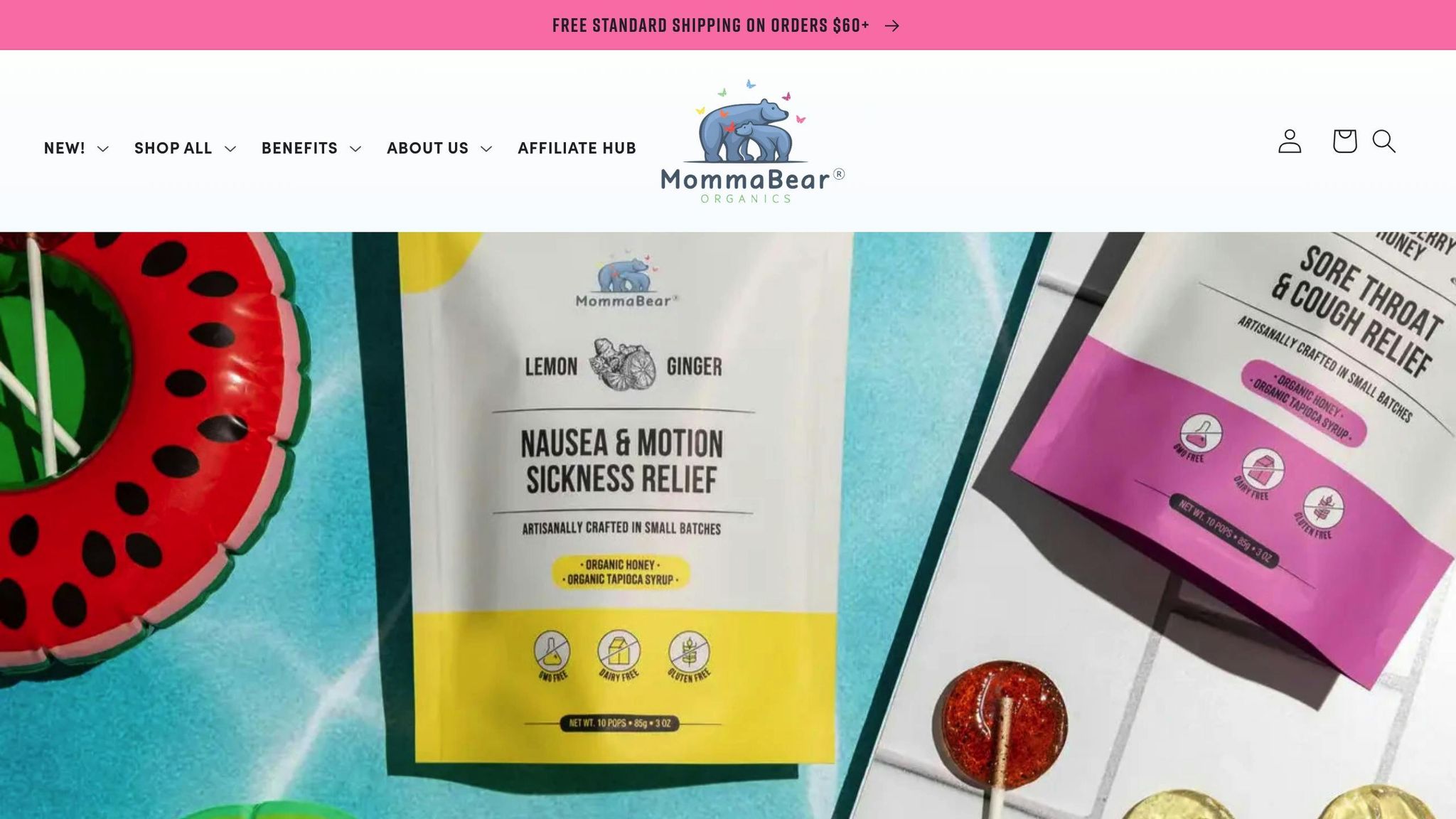
I stumbled upon MommaBear Organics, and what I love is that their lollipops aren't just allergy-free, they're made to help with little things like a sore throat or an upset tummy. They're free from all the big stuff—GMOs, gluten, dairy, high fructose corn syrup—so it’s a really dependable choice for us.
You can tell they put a lot of care into it. They make them in small batches, and there’s no artificial junk in there. Just simple, organic ingredients. It’s the kind of treat I feel good about.
I was looking at reviews and saw this one from a mom named Grace on Amazon, and it’s exactly how I feel:
"Organic, simple ingredients and great flavor definitely kids approved."
They have a few different kinds, for things like motion sickness or coughs, and they’re made right here in the USA. They're safe for kids 3 and up, and honestly, that 30-day money-back guarantee tells me they really stand behind their stuff. It just makes things a little easier, and right now, I’ll take all the easy I can get.
Tips for Finding Allergy-Free Candy
Okay, so making sure candy is safe does take a little bit of planning. It’s not always as simple as running into the corner store. But I've picked up a few tricks along the way that make the whole process a little less overwhelming.
Shopping at Specialty Stores and Online
I used to just try my luck at the regular grocery store, but I’ve found that places like Whole Foods or Trader Joe’s are just… easier. They tend to have sections or brands that are specifically for people with dietary restrictions, so you’re not searching for a needle in a haystack.
And honestly, online shopping has been a total game-changer. You can filter your search by the exact allergen you need to avoid. So helpful. Ordering directly from an allergy-free company is great too, especially when I’m getting ready for a holiday and need to stock up.
Holiday Candy Tips
Halloween… oh man, Halloween used to give me so much anxiety. All that candy from strangers, so many different kinds, it’s a minefield.
My big thing now is to stock up on safe treats way in advance. For trick-or-treating, we have a rule: no eating anything until we get home and check it all. I have a stash of safe candy ready to trade for anything he gets that isn’t safe. If it doesn’t have a label, it goes. No exceptions.
And when we go to parties, I always bring our own safe snacks. I’ll chat with the host beforehand, but it’s just easier not to have to worry. Non-food treats are also amazing—little toys, glow sticks, that kind of thing. They’re fun, and everyone can have them.
Most importantly, I’m teaching my son how to say, "No, thank you. I have a food allergy." It’s empowering for him, and it’s one more layer of safety. It's better to stick with what you know and trust during those crazy times of year.
So yeah, that’s pretty much everything I’ve learned. It feels like a lot sometimes, I know. There are days when I get so tired of being the "food police," of having to read every single thing and ask a million questions. But then I look at my kid, so happy with a simple lollipop that I know won't hurt him, and I remember why it's all so important. It’s not about being perfect, it's just about keeping them safe and still letting them have a little bit of that candy magic, you know? It’s worth it.
FAQs
How can I make sure the candy I buy is safe for my family's allergies?
Okay, so to make sure the candy is actually safe, the first thing I always do is read the label like a hawk. You’ve got to look for the big ones—peanuts, milk, soy, all of those. They have to be listed. Also, I pay super close attention to those "may contain" warnings. If it says it was made in a facility that handles peanuts and you have a peanut allergy, I’d just leave it on the shelf. If you’re really not sure, go with a brand you trust, one that’s all about being allergy-friendly, like MommaBear Organics. Their stuff is made to be safe, so it takes a lot of the guesswork out.
How can I spot hidden allergens in candy to keep my family safe?
Spotting the hidden stuff is tricky, but it all comes back to the label. The law says the top nine allergens have to be called out, which is a lifesaver. But you still have to be careful. For example, caramel usually has dairy, and nougat can have eggs. The other thing that gets people is the different sizes—a fun-size bar might have different ingredients than the full-size one. It’s wild, I know. So my rule is, I check the label every single time, no matter what.
What should I do if I think a candy might be cross-contaminated with allergens, even if the label says it's safe?
Honestly, if your gut is telling you something feels off, just skip it. It's always better to be safe than sorry. If a package looks weird or there’s no clear ingredient list, it’s a no from me. If you’re really on the fence, you can always call the company and ask them about how they handle cross-contamination. And if your child has a severe allergy, just make sure their epinephrine auto-injector is with them. When it comes to safety, just trust your instincts. There are plenty of other safe treats out there.
Related posts
- Raw Honey vs. Propolis: Allergy Relief Options
- How Organic Lollipops Help Allergies
- How Herbal Candy Eases Anxiety
- How Plant-Based Lollipops Support Everyday Wellness



